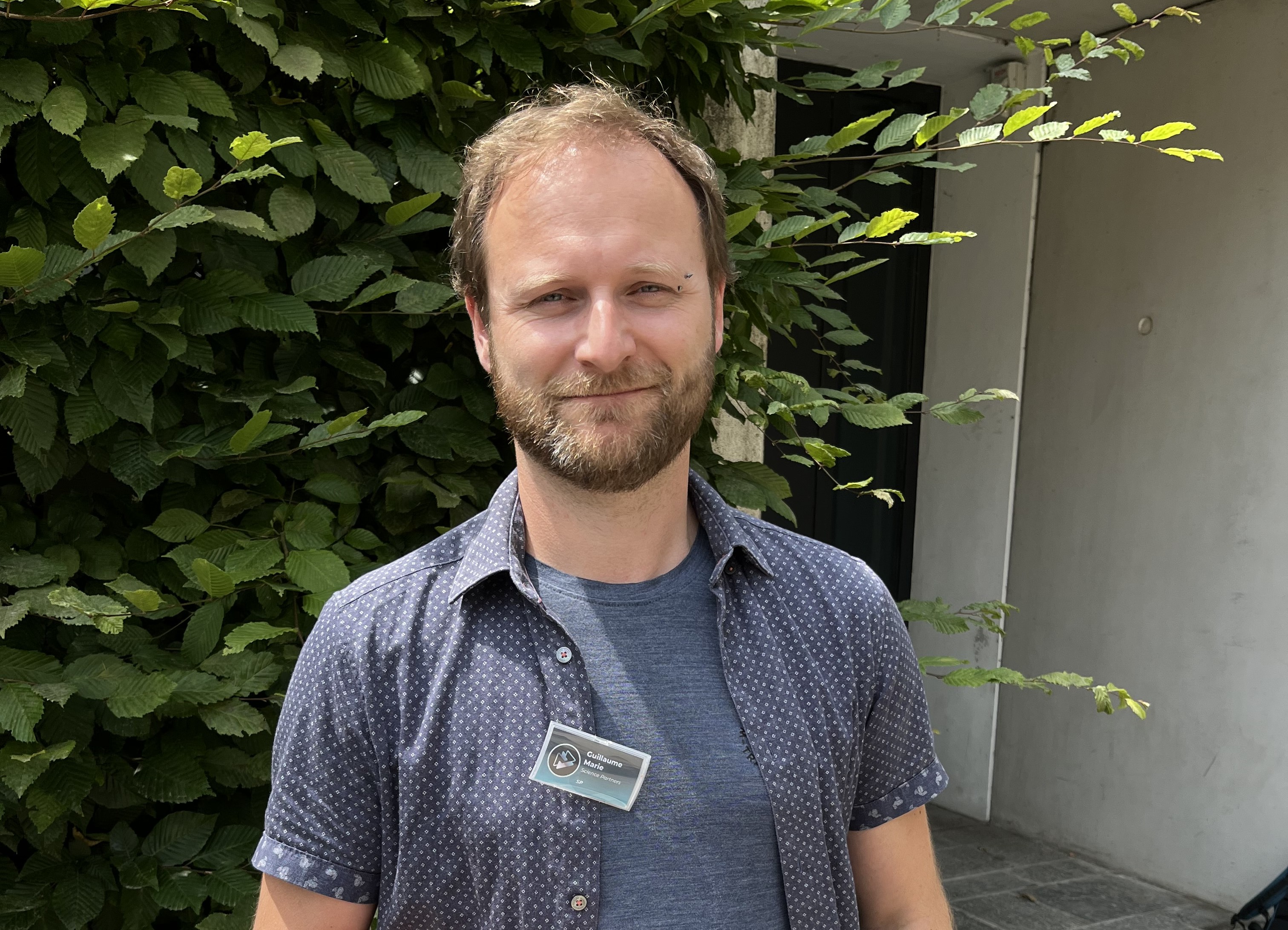SCIENTIST SAYS / NGC MONTHLY SERIES / NOVEMBER 2025
Dr Guillaume Marie - ORCHIDEE Modeller
Wed 5 November 2025, NGC Communication Team

Expert Guillaume Marie. Photo: NGC Communication Team
SCIENTIST
SAYS – OUR MONTHLY INTERVIEW SERIES Let us introduce
you to Dr Guillaume
Marie, an expert in multi-scale ecosystem modelling at Science Partners in
France, specializing in the representation of explicit human or natural
disturbances and their consequences on the carbon cycle. Guillaume is a co-lead
of the Enhanced Model Representation of Anthropogenic and Natural Disturbances
Team (WP5) at NextGenCarbon, working with the ORCHIDEE (Organising
Carbon and Hydrology in Dynamic Ecosystems) model within the project. We asked Guillaume what carbon modelling is all about.
Could you tell us what carbon modelling is, and do you have some specific areas of interest within the ORCHIDEE model?
- When we talk about carbon modelling, we study in all forms where carbon is stored: minerals, gases, and organic. Modelling carbon is finally trying to simulate the pathway of carbon from mineral (soil) to organic (plant) and finally gases (CO2) by calculating the flux between them.
- I am more into the organic part, and I try to bring the concepts of ecology into a land surface model such as ORCHIDEE. The purpose of Ecology here is to better represent the carbon stock in plants and how this stock travels to the atmosphere because of plant physiology and ecosystem dynamics. One of the main drives of the ecosystem dynamic is disturbance whether they are human driven or natural. So, my work is to develop modules in ORCHIDEE that handle disturbances to better estimate the flux of carbon that moves from ecosystem to atmosphere.
What concrete outcome can ORCHIDEE land surface model produce?
- ORCHIDEE produces carbon stocks and flux pathways simulations from soil to atmosphere under different hypothetic scenarios. Scenarios are crafted to include future climate change, forest management, and disturbance regime change. Such simulation produces temporal and spatial results that can be exploited to help stakeholders take decisions about future rules applied at the EU scale.
Scenarios are crafted to include future climate change, forest management, and disturbance regime change. Such simulation produces temporal and spatial results that can be exploited to help stakeholders take decisions about future rules applied at the EU scale.
What is your role in NextGenCarbon and how ORCHIDEE is used in the project?
- In recent years we see that remote sensing products have become increasingly available for modelers to drive their models. But the capacity of the LSM (Land Surface Model) to assimilate this huge quantity of information is still a work in progress. My part is trying to understand how to use high resolution remote-sensing biomass data and translate key characteristics such as landscape heterogeneity, into input data for ORCHIDEE. Landscape heterogeneity is the first information we lose when we upscale spatial resolution, but we know that this heterogeneity drastically affects disturbance intensity. So, our objective in NextGenCarbon is to include heterogeneity dynamics into ORCHIDEE to better represent the dynamics of carbon losses due to disturbances.
What are your expectations for the project?
- What I expect from NextGenCarbon is through the large network of scientists it manages to gather; I hope to exchange about the more relevant remote sensing (RS) dataset to explore landscape heterogeneity that will be provided by Large Scale Spatial Analysis team (WP3) and create large Scale Spatial Analysis of heterogeneity effect on carbon fluxes. For example, they plan to create a high-resolution biomass concentration dataset over Europe which would be extremely valuable for us to calculate ecosystem edges length.
- I think it's also nice that we have a large variety of models (Blue, JULES-RED, EFISCEN-space, CLM-FATES) because, with these models, we can also see how other models simulate carbon cycles but with different representations of heterogeneity and disturbances. I think it's always enriching to have these kinds of insights from other research groups.
Where can people interested in modelling find you?
Research Gate Profile: https://www.researchgate.net/profile/Guillaume-Marie-2/research
